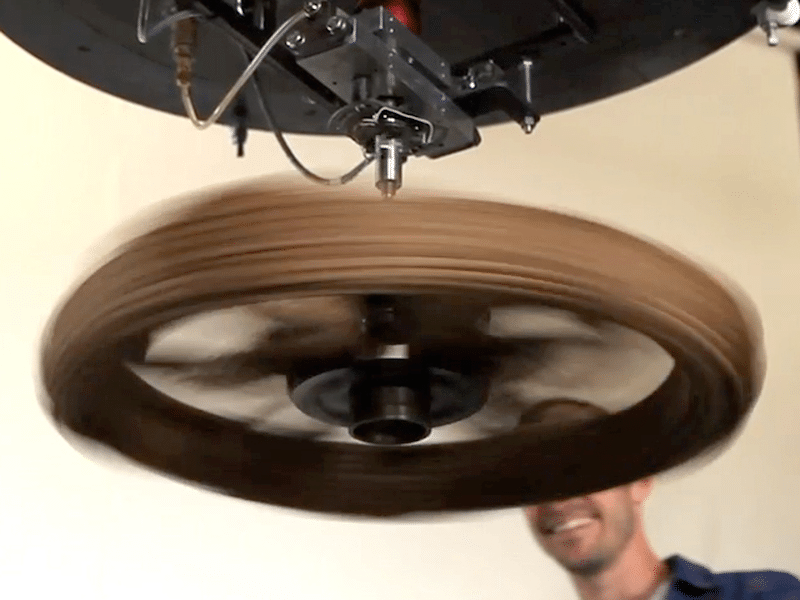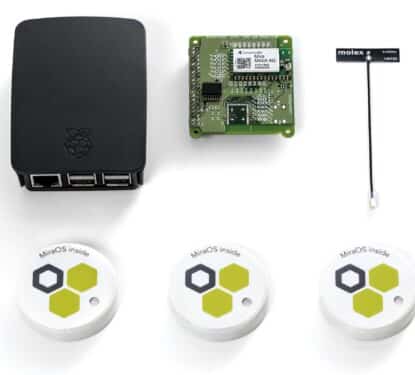Energy storage has long been touted as the last piece of the energy puzzle, that it would enable off-grid and micro-grid independence and allow renewable energy to take a primary role in the energy mix. However, current storage systems are yet to take a firm and cost effective grip on the market.
Despite the continued developments, batteries are still too expensive and don't last quite long enough. Pumped hydro is cheap but not feasible for most locations. Thermal storage is promising but still too expensive or hard to scale. Compressed air is cheap and scalable but not yet efficient enough, although LightSail, a new company backed by Bill Gates among others, are making great strides.

So while we wait for economies of scale and technological advancements in these energy production systems, the flywheel has been drawing some of the spotlight.
Silicon Valley based inventor Bill Gray recently designed a new flywheel that would deliver distributed and highly scalable storage for around $1,333 a kilowatt, making it price competitive with pumped hydro and compressed air. With an efficiency of more than 80%, it would rival the best storage alternatives, and come with a 10 year guarantee.
A competent flywheel system would make a perfect complement to an off-grid house with a solar photovoltaic (PV) system, able to charge fully in 5 hours (within the charging time of most solar PV systems) and store 15 kilowatt-hours of power, enough to run a modest house from sunset to sunrise.
Gray calls his invention the Velkess (for VEry Large Kinetic Energy Storage System). He is currently raising money for the prototype in a Kickstarter campaign. The Velkess improves on traditional flywheels by better managing the natural "wobble" of a spinning mass. Traditional flywheels have been very expensive because engineers align the natural axis of the wheel's rotation with the desired rotation of the generator.
Thus, they are always struggling to minimize the natural wobble of the wheel using very expensive magnets and bearings, high-precision engineering and materials like high-grade carbon fibre or rigid steel. Beacon's flywheel for grid storage cost a whopping $3 million per megawatt-hour. Instead of trying to fight the wobble, Gray redirected it by suspending the wheel within a gimbal, the same concept that makes a gyroscope work.
The Velkess is not the only flywheel technology to receive extra attention recently. In the US military’s Camp Pendleton micro-grid, they are testing Quantum Energy’s 60-kilowatt, 100-kilowatt-hour (kWh) flywheel system. Compared to other flywheels, the steel design is closer to a flywheel pancake than a traditional cylinder. It is less than two feet thick and runs at a much lower rate of rotations per minute (RPM), about 6,000, compared to flywheels from Temporal Power and Beacon Power, which run at more than 10,000 RPM.
[contact-form-7 id="3204" title="memoori-newsletter"]
Quantum’s energy storage system exceeds the Department of Energy (DOE) utility scale performance metrics for energy storage. This includes system capital cost with potential to attain a price target of $150 per kWh, levelled cost per discharge cycle under 10 cents per kWh/cycle, over 80% efficiency, and with a lifetime exceeding 50,000 cycles, explained a company statement.
Flywheel’s produce no harmful emissions nor hazardous materials. Quantum Energy were, however, in the news for all the wrong reasons in June this year, after an explosion at their San Diego testing facility sent four people to hospital. At a news conference shortly after, Quantum Energy Storage’s chief executive officer, Tien Nguyen, said that whatever went wrong at the site was a mechanical issue, not a problem connected to the kinetic energy storage prototype being tested at the company's research and development lab.
“It is unfortunate but we will continue to make sure this incident never happens again”, Nguyen said. “We will make assessments and take corrective actions”. He also said the company is now thinking about moving its R&D facility to a “more remote location”.
Despite this isolated incident, the flywheel is slowly and surely developing as a viable alternative to batteries and other energy storage systems. Which current or future technologies make it past prototype and into full energy production, is likely to be decided by capacity, cost and adaptability to our smart urban micro-grid environment.



